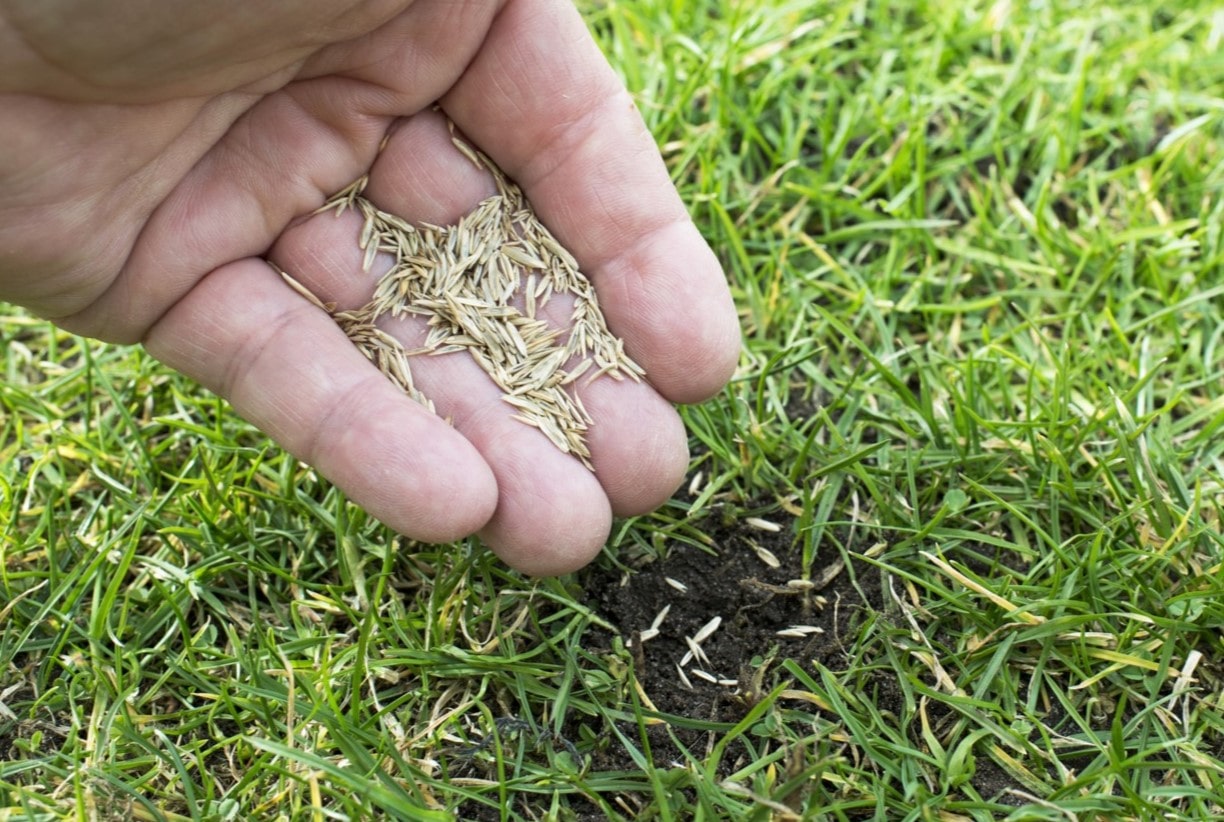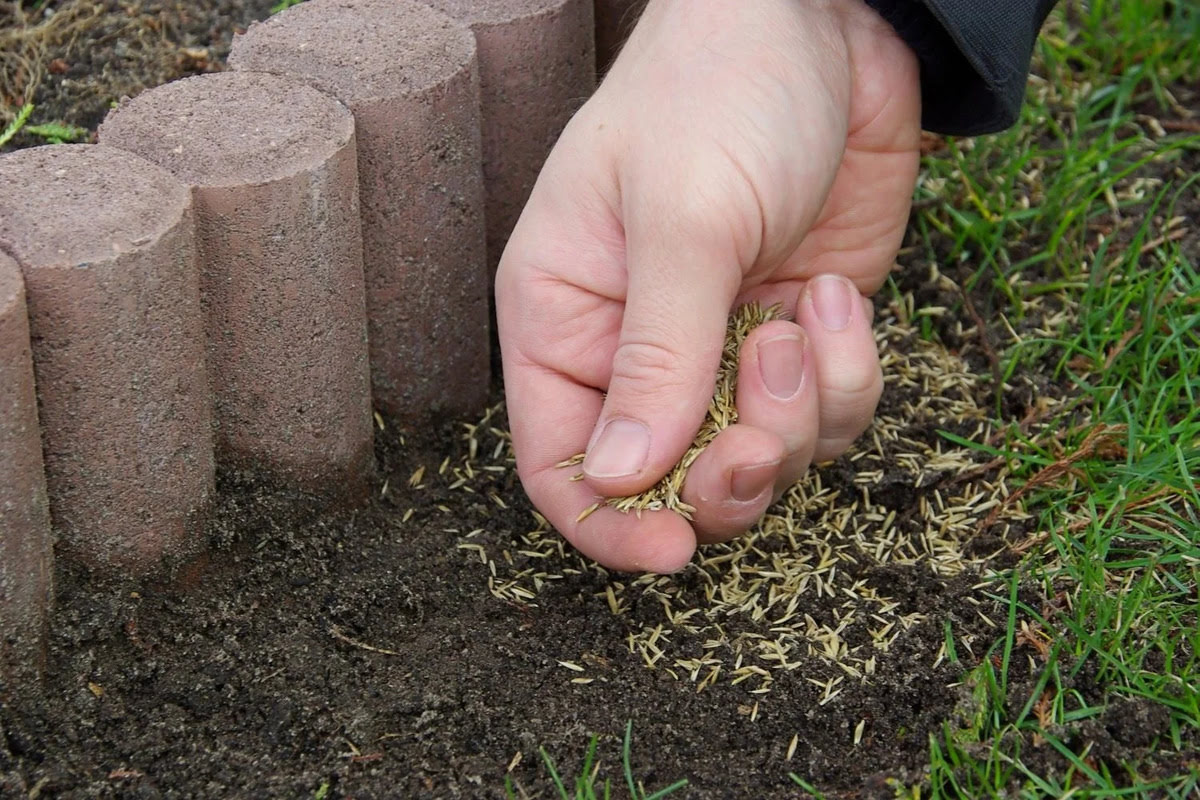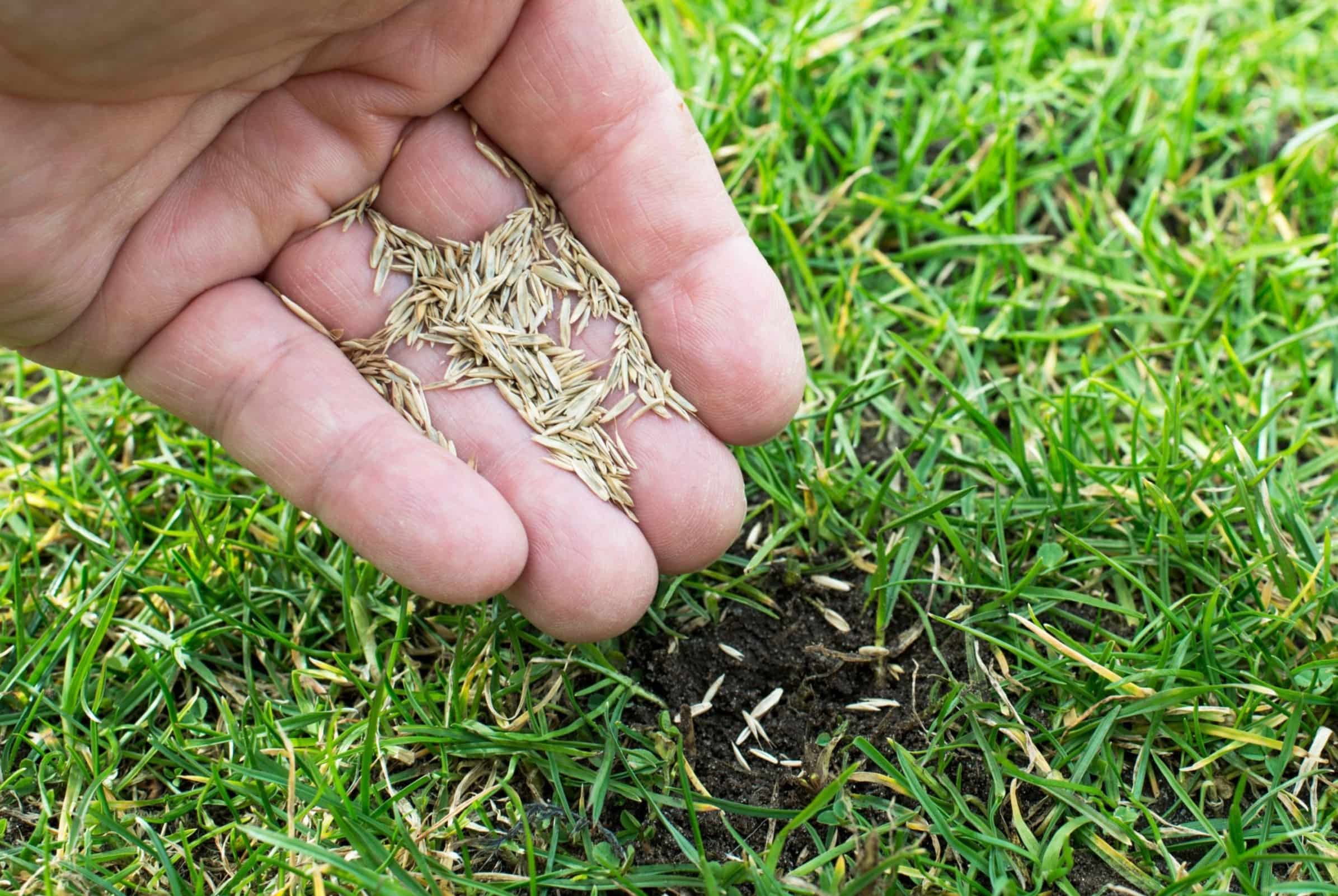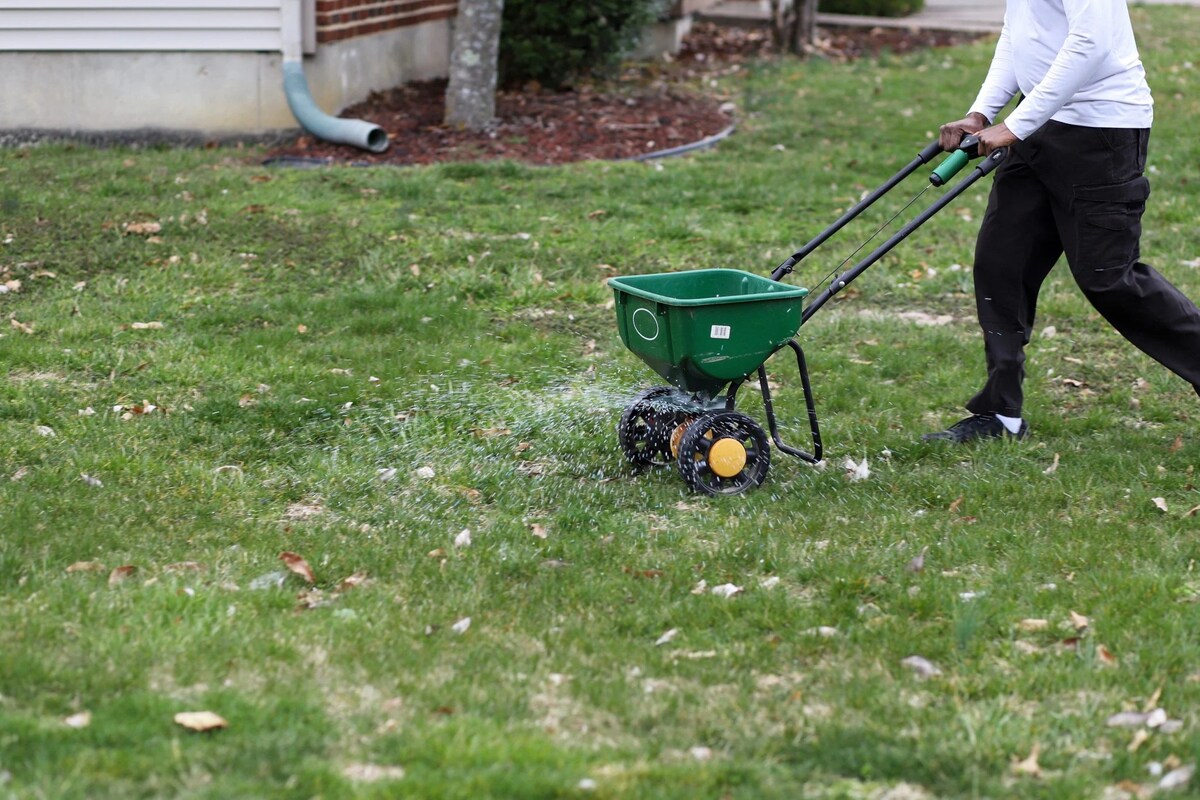Home>Gardening & Outdoor>Landscaping Ideas>When To Plant Grass Seed In CT In Fall


Landscaping Ideas
When To Plant Grass Seed In CT In Fall
Modified: August 27, 2024
Discover the best time to plant grass seed in Connecticut during the fall season. Get expert landscaping ideas and tips for a lush, thriving lawn.
(Many of the links in this article redirect to a specific reviewed product. Your purchase of these products through affiliate links helps to generate commission for Storables.com, at no extra cost. Learn more)
Introduction
Are you a Connecticut resident looking to transform your lawn into a lush, verdant oasis? Planting grass seed is an excellent way to achieve a vibrant and healthy lawn. However, to ensure successful germination and growth, it's crucial to understand the unique climate and conditions of Connecticut. By selecting the right grass seed and timing the planting correctly, you can set the stage for a thriving lawn that will be the envy of the neighborhood.
In this comprehensive guide, we'll delve into the specifics of planting grass seed in Connecticut in the fall. From understanding the climate and soil conditions to selecting the ideal grass seed types and mastering the planting process, we'll equip you with the knowledge and insights needed to embark on this rewarding endeavor. Whether you're a seasoned gardener or a novice enthusiast, this guide will provide valuable tips and best practices for achieving a lush, resilient lawn that can withstand the diverse weather patterns of Connecticut.
So, roll up your sleeves, grab your gardening tools, and get ready to embark on a journey to transform your lawn into a vibrant, inviting space. With the right information and a dash of enthusiasm, you'll soon be on your way to cultivating a picture-perfect lawn that enhances the beauty of your home and provides a welcoming outdoor haven for relaxation and recreation. Let's dive into the details of when and how to plant grass seed in Connecticut, ensuring that your lawn will flourish for years to come.
Key Takeaways:
- Plant grass seed in Connecticut in early fall for optimal growth. Choose cool-season grasses like Kentucky bluegrass, fescue, and ryegrass to thrive in the state’s diverse climate and soil conditions.
- Prepare your lawn by testing the soil, aerating, and adding amendments before planting. Care for newly planted grass seed by watering consistently, controlling weeds, and minimizing disturbances for a lush, resilient lawn.
Read more: When To Plant Grass In Fall
Understanding the Climate in Connecticut
Connecticut, nestled in the heart of the northeastern United States, experiences a diverse climate characterized by four distinct seasons. The state’s climate is influenced by its proximity to the Atlantic Ocean, Long Island Sound, and the varied topography that ranges from coastal plains to hilly terrain. Understanding the nuances of Connecticut’s climate is essential for selecting the right grass seed and determining the optimal time for planting.
Winters in Connecticut are typically cold, with average temperatures ranging from 22°F to 35°F (-5.5°C to 1.6°C). Snowfall is common, especially in the northern and western regions of the state, where the annual snowfall can exceed 40 inches. The spring season brings milder temperatures, with average highs ranging from 57°F to 67°F (13.9°C to 19.4°C). However, springtime in Connecticut can also be characterized by fluctuating weather patterns, including occasional frost and chilly nights.
Summer in Connecticut is warm and humid, with average temperatures ranging from 75°F to 85°F (23.9°C to 29.4°C). The state experiences occasional heat waves, and the coastal areas benefit from refreshing sea breezes. Fall is a picturesque season in Connecticut, marked by vibrant foliage as the temperatures gradually cool down. Average fall temperatures range from 55°F to 65°F (12.8°C to 18.3°C), creating an ideal environment for planting cool-season grasses.
Connecticut’s climate is also influenced by its USDA hardiness zones, which range from 5b in the northwest corner of the state to 7a along the coast. These hardiness zones provide valuable insights into the types of grasses that are well-suited for the region and the timing of planting to optimize growth and resilience.
When selecting grass seed for your Connecticut lawn, it’s essential to consider the state’s climate and choose grass varieties that can thrive in its unique conditions. By understanding the seasonal weather patterns, temperature fluctuations, and overall climate of Connecticut, you can make informed decisions that will contribute to the long-term health and beauty of your lawn.
Ideal Grass Seed Types for Connecticut
Choosing the right grass seed is a crucial step in establishing a resilient and visually appealing lawn in Connecticut. Given the state’s diverse climate and soil conditions, selecting grass seed varieties that are well-suited to the region is essential for achieving optimal results. Cool-season grasses, which thrive in the northeastern climate, are the ideal choice for Connecticut’s lawns.
Kentucky bluegrass is a popular choice for Connecticut lawns due to its lush, fine texture and rich green color. This cool-season grass is well-adapted to the state’s climate and exhibits excellent tolerance to cold temperatures. It forms a dense, uniform turf that withstands foot traffic and enhances the aesthetic appeal of residential lawns.
Fescue grasses, including tall fescue and fine fescue, are another excellent option for Connecticut lawns. Tall fescue is known for its durability and ability to tolerate a variety of soil conditions, making it well-suited for the diverse terrain found throughout the state. Fine fescue, with its fine blades and shade tolerance, thrives in the cooler temperatures of Connecticut and is an ideal choice for areas with partial shade.
Perennial ryegrass is prized for its rapid germination and establishment, making it a valuable component in grass seed blends for Connecticut lawns. Its fine texture, vibrant color, and resilience to foot traffic make it a desirable choice for homeowners seeking a lush and enduring lawn.
When selecting grass seed for your Connecticut lawn, consider blends that combine different grass varieties to leverage their unique strengths. For example, a blend of Kentucky bluegrass, tall fescue, and perennial ryegrass can create a resilient and visually appealing lawn that thrives in Connecticut’s climate.
It’s important to note that soil conditions, sunlight exposure, and intended land use should also influence your choice of grass seed. Whether you’re establishing a new lawn or overseeding an existing one, selecting grass seed types that align with Connecticut’s climate and your specific lawn care goals will set the stage for a thriving and enduring lawn.
Best Time to Plant Grass Seed in Connecticut
Timing is critical when it comes to planting grass seed in Connecticut. While the state’s climate experiences distinct seasonal changes, the fall season is widely regarded as the optimal time for planting grass seed. The cooler temperatures and ample moisture create favorable conditions for seed germination and establishment, setting the stage for a resilient and vibrant lawn.
Early fall, particularly from late August through mid-October, presents an ideal window for planting grass seed in Connecticut. During this period, the soil retains warmth from the summer months while the cooler air temperatures reduce the stress on newly germinating seeds. Additionally, fall typically brings increased precipitation, providing essential moisture for seed germination and early growth.
By planting grass seed in the fall, homeowners in Connecticut can take advantage of the favorable conditions to establish a robust root system before the onset of winter. This early root development sets the foundation for a healthy and resilient lawn that can withstand the challenges of the following spring and summer.
It’s important to note that timing may vary slightly depending on the specific grass seed varieties you plan to plant. For cool-season grasses such as Kentucky bluegrass, fescue, and ryegrass, early fall remains the prime window for planting. However, it’s advisable to consult with local gardening experts or extension services to determine the optimal timing based on your location within Connecticut and the specific grass seed blends you intend to use.
While fall is the preferred season for planting grass seed, early spring also presents a secondary opportunity for seeding in Connecticut. As the temperatures begin to rise and the soil thaws, typically from late March to mid-May, homeowners can opt to plant grass seed to rejuvenate their lawns or address areas that may have thinned over the winter months. However, it’s important to recognize that spring planting may require more diligent watering and maintenance to support seed establishment, as the warmer temperatures and potential dry spells can pose challenges for young grass seedlings.
By understanding the seasonal nuances and leveraging the optimal timing for planting grass seed, homeowners in Connecticut can maximize the likelihood of successful germination and establish a lush, resilient lawn that enhances the beauty of their outdoor spaces.
Plant grass seed in CT in the fall between late August and mid-October. This allows the seeds to establish before winter and gives them a head start in the spring. Keep the seeds watered and protected from heavy foot traffic.
Preparing Your Lawn for Planting
Before embarking on the exciting journey of planting grass seed in Connecticut, it’s essential to prepare your lawn to create an optimal environment for seed germination and growth. Proper preparation sets the stage for successful establishment and ensures that your new grass seed will thrive in the diverse climate and soil conditions of the state.
Begin by evaluating the existing condition of your lawn. Remove any debris, such as fallen leaves, branches, or thatch, to create a clean and receptive surface for the new grass seed. If necessary, perform a soil test to assess the pH levels and nutrient content of the soil. Understanding the soil composition will guide you in making informed decisions about soil amendments and fertilization to create a hospitable environment for the grass seed.
Next, consider aerating the soil to alleviate compaction and promote better air and water penetration. Aeration helps create an ideal seedbed by loosening the soil and facilitating root development, ultimately contributing to the long-term health of your lawn. Additionally, if your lawn exhibits bare or thin areas, consider overseeding to supplement the existing grass and enhance the overall density and resilience of the turf.
Soil amendments, such as organic matter or compost, can be incorporated into the soil to improve its structure and fertility. This step is particularly beneficial for enhancing the moisture retention capacity of the soil and providing essential nutrients for the newly germinating grass seed. Additionally, applying a starter fertilizer specifically formulated for new seedlings can provide a vital boost to the young plants as they begin to establish themselves.
Prior to planting the grass seed, ensure that the soil surface is level and free of large clumps or uneven areas. Raking the soil gently can help create a smooth and uniform seedbed, allowing the grass seed to make optimal contact with the soil for successful germination. Lightly compact the soil after planting to ensure good seed-to-soil contact, which is crucial for the initial stages of growth.
Lastly, consider the sun exposure and water availability in the planting area. Most grass seed varieties thrive in areas with ample sunlight, so ensure that the planting site receives the necessary sunlight for successful growth. Additionally, plan for consistent watering, especially during the critical germination and establishment phase, to provide the moisture essential for seedling development.
By meticulously preparing your lawn for planting, you can create an ideal environment for the successful germination and growth of the grass seed. Taking the time to address soil quality, aeration, soil amendments, and site preparation will yield long-lasting benefits, resulting in a lush and resilient lawn that enhances the beauty of your outdoor space.
Read more: What Grass To Plant In The Fall
Planting Grass Seed in Connecticut
As the preparations for planting grass seed in Connecticut come to fruition, it’s time to embark on the exciting process of sowing the seeds and nurturing the growth of a vibrant, resilient lawn. Whether you’re establishing a new lawn or overseeding existing turf, the planting phase is a crucial step that sets the stage for the long-term health and beauty of your outdoor space.
When planting grass seed, aim for an even and thorough distribution of the seeds across the designated area. Using a broadcast spreader or a handheld seeder can help achieve uniform coverage, ensuring that the seeds are adequately dispersed for optimal germination and growth. It’s advisable to follow the recommended seeding rates for the specific grass seed varieties you’ve selected, as over-seeding or under-seeding can impact the establishment and overall density of the lawn.
After spreading the grass seed, lightly rake the soil to cover the seeds with a thin layer of soil. This gentle covering helps protect the seeds from drying out and provides the necessary soil contact for successful germination. Avoid burying the seeds too deeply, as this can impede their ability to sprout and emerge from the soil. Additionally, consider applying a light layer of mulch, such as straw or erosion control blankets, to further safeguard the seeds and promote moisture retention during the critical germination period.
Watering is a crucial aspect of the planting process, especially in the initial stages of seed germination and establishment. Keep the soil consistently moist, but not waterlogged, to support the growth of the young seedlings. Frequent, light watering is typically recommended to ensure that the soil remains adequately moist without creating overly saturated conditions that could hinder germination.
As the grass seed begins to germinate and the seedlings emerge, continue to monitor the moisture levels and adjust your watering regimen as needed. Once the grass seedlings have established a solid root system and exhibit robust growth, gradually transition to a deeper and less frequent watering schedule to encourage the development of a resilient and drought-tolerant lawn.
Depending on the specific grass seed varieties you’ve planted, the germination period may vary. While some grasses may sprout within a week or two, others may take several weeks to emerge. Exercise patience and provide consistent care and attention to support the healthy establishment of the grass seedlings.
By following these steps and providing diligent care during the planting phase, you can set the stage for the successful germination and establishment of the grass seed, ultimately cultivating a lush, resilient lawn that enhances the beauty of your outdoor environment.
Caring for Newly Planted Grass Seed
After the labor of planting grass seed in Connecticut, it’s essential to provide attentive care to nurture the newly germinating seeds and support the establishment of a resilient and vibrant lawn. Caring for the young grass seedlings involves a combination of proper watering, monitoring, and proactive measures to create an environment conducive to healthy growth and long-term success.
Watering is a critical aspect of caring for newly planted grass seed. During the germination and early growth stages, maintaining consistent soil moisture is essential for the development of strong, healthy seedlings. Water the newly seeded area lightly and frequently, ensuring that the soil remains consistently moist without becoming waterlogged. Avoid allowing the soil to dry out, as this can impede germination and hinder the growth of the young grass seedlings.
As the grass seedlings begin to emerge, continue to monitor the moisture levels and adjust your watering regimen based on the weather conditions. During periods of hot, dry weather, additional watering may be necessary to sustain the young seedlings and prevent the soil from drying out. Conversely, during periods of heavy rainfall, monitor the soil to prevent excessive saturation, which can be detrimental to the developing grass seedlings.
Maintaining a gentle and consistent watering routine is crucial for the initial stages of growth, as it supports the development of a robust root system and encourages the young grass seedlings to establish themselves firmly in the soil. As the seedlings mature and develop deeper roots, gradually transition to a deeper and less frequent watering schedule to promote the resilience and drought tolerance of the emerging lawn.
While caring for newly planted grass seed, it’s important to minimize foot traffic and other activities that could disturb the delicate seedlings. Avoid mowing the newly seeded area until the grass has reached a height of at least 3 inches. When it’s time to mow, adjust the mower to a higher setting to avoid removing more than one-third of the grass blade, which can stress the young lawn.
During the initial growth phase, be mindful of weed control. While the grass seedlings are establishing themselves, it’s essential to minimize competition from weeds that could impede their growth. Consider using a pre-emergent herbicide specifically formulated for new seedlings to prevent the germination of weeds without harming the emerging grass.
By providing attentive care, including proper watering, monitoring, and proactive weed control, you can nurture the newly planted grass seed and support the healthy establishment of a lush, resilient lawn. With patience and diligent care, you’ll soon witness the transformation of your outdoor space into a verdant and inviting landscape that enhances the beauty of your home.
Conclusion
Embarking on the journey of planting grass seed in Connecticut presents an exciting opportunity to cultivate a vibrant and resilient lawn that enhances the beauty of your outdoor space. By understanding the climate, selecting the ideal grass seed types, and mastering the planting process, you can set the stage for a lush and enduring lawn that thrives in the diverse environmental conditions of the state.
Connecticut’s seasonal changes, from the cold winters to the warm, humid summers, create a dynamic climate that influences the growth and resilience of the lawn. By leveraging the optimal timing and selecting cool-season grass seed varieties, such as Kentucky bluegrass, fescue, and ryegrass, you can establish a lawn that flourishes in the state’s unique climate and soil conditions.
Proper preparation of the lawn, including soil testing, aeration, and soil amendments, creates an optimal environment for successful seed germination and growth. Careful attention to the planting process, including even seed distribution, gentle soil coverage, and consistent watering, supports the healthy establishment of the grass seedlings, laying the foundation for a robust and enduring lawn.
As the newly planted grass seed begins to germinate and emerge, diligent care and attention are essential to nurture the young seedlings and promote their healthy growth. Consistent watering, proactive weed control, and minimizing disturbances to the emerging lawn contribute to the successful establishment of a lush, resilient landscape that enriches your outdoor environment.
By following the guidelines outlined in this comprehensive guide and infusing your efforts with care and patience, you’ll soon witness the transformation of your lawn into a verdant oasis that beckons with its beauty and resilience. Whether you’re a seasoned gardener or a novice enthusiast, planting grass seed in Connecticut is a rewarding endeavor that yields a lasting and vibrant outdoor space for relaxation, recreation, and natural beauty.
So, roll up your sleeves, embrace the journey, and revel in the transformation of your lawn into a thriving and captivating landscape that reflects the unique charm of Connecticut’s climate and your dedication to creating a beautiful outdoor haven.
Frequently Asked Questions about When To Plant Grass Seed In CT In Fall
Was this page helpful?
At Storables.com, we guarantee accurate and reliable information. Our content, validated by Expert Board Contributors, is crafted following stringent Editorial Policies. We're committed to providing you with well-researched, expert-backed insights for all your informational needs.















0 thoughts on “When To Plant Grass Seed In CT In Fall”